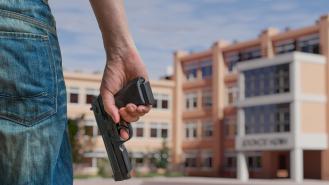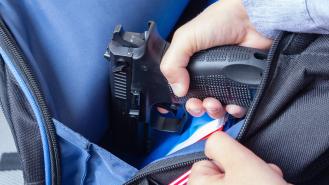
The worst gun massacres in British history
If we use the FBI's definition of a mass shooting as 'any single attack in a public place with three or more fatalities', over the past decade the United States of America has seen an average of eight such incidents a year. The United Kingdom, on the other hand, has had just four in its entire history.
Of course, Britain has a significantly smaller population (66 million compared to 267 million). Yet it’s gun laws that are the main differentiator between the two nations.
Therefore, gun massacres are extremely rare in the UK. Their comparative infrequency is positive, but it’s also what makes them all the more shocking when they do occur.
In reverse chronological order, here are the tragic details of the four dreadful events that have darkened modern British history.
The Plymouth Shooting (2021)
Number of victims killed: 5
Number of injuries: 2
Three years before Jake Davison went on a shooting spree in the Keyham area of Plymouth, Devon, he applied for and received a licence to own a firearm. Despite briefly having that licence rescinded by police in 2020, he got it back and used one of his legally-owned guns to carry out a devastating attack that left half a dozen people (including himself) dead.
Quite why Davison decided to carry out the massacre on 12th August 2021 is unclear. Police discovered no documented evidence of a motive and no written manifesto. However, a later investigation did uncover that the gunman had a history of mental health issues and was active in online incel communities. He was also known for his aggressively sexist attitudes and nihilistic outlook on life.
The incident was, effectively, a domestic situation that spilled out onto the street. After a fierce row, the 22-year-old shot and killed his mother with a pump-action shotgun, before leaving the house and gunning down a toddler and her father. He then shot a 59-year-old man and a 66-year-old woman after wounding another woman and her son in a nearby house. Apart from his mother, Davison knew none of his victims.
The Cumbria Shootings (2010)
Number of victims killed: 12
Number of injuries: 11
2nd June 2010 saw a two-hour shooting rampage by a taxi driver that shocked the entire country. What began as a series of targeted shootings soon escalated as Derrick Bird drove across Cumbria, killing and wounding strangers in bursts of random attacks.
After shooting dead his twin brother, the family solicitor and a rival cabbie, Bird set off on a deadly journey around the picturesque county, firing bullets into nine more innocent, random victims. Not long after midday, Bird parked up at a local beauty spot and turned the gun on himself.
It’s thought that a series of setbacks in Bird’s personal life, coupled with an investigation into his tax affairs by HMRC may have contributed to his state of mind. His targeted shootings appear to tie into long-held grudges, while the random murders and woundings spoke more to his fractured state of mind.
The Dunblane Massacre (1996)
Number of victims killed: 17
Number of injuries: 15
School shootings just don’t happen in small Scottish towns. So when Thomas Hamilton walked into Dunblane Primary School at 9.30am and shot dead 16 pupils and a teacher, injured 15 others and then killed himself, few could believe it had really happened.
A motive for the handgun attack was never firmly established, although Hamilton was a former Boy Scouts leader who had a history of inappropriate conduct around underaged boys. He had taken his dismissal from the Scout Association very badly. British tennis player Andy Murray recalled attending Hamilton’s meetings as a child and was a survivor of the attack.
The Dunblane Massacre instantly became - and remains - the worst mass shooting in British history. Afterward, handgun laws in the UK were very quickly and very aggressively tightened.
School security immediately became a concern in the aftermath of the attack and remains a consideration in the education system to this day.
The Hungerford Massacre (1987)
Number of victims killed: 16
Number of injuries: 15
As we’ve seen, there have been only three mass shootings in Britain since what happened in the affluent Berkshire town of Hungerford back in August 1987. Yet with the increasing frequency of such attacks in the US, gun massacres are now much more in the popular consciousness than in the late 1980s. Back then, however? It was a different story entirely.
The nation was in a state of shock and disbelief in 1987 when word spread that 27-year-old Michael Ryan had shot dead 16 people in Hungerford. Among the dead were an unarmed police officer and the killer’s own mother. Ryan went on to callously murder a further 14 victims before turning the gun on himself.
A part-time self-employed antique dealer, Michael Ryan was an archetypical loner, living with his mother and undiagnosed mental health problems (later believed to be schizophrenia and psychosis). He was said to be obsessed with guns and ammunition and something of a fantasist.









